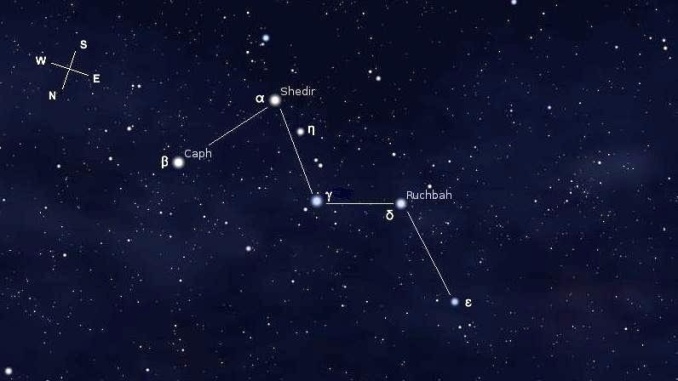The constellation Cassiopeia is a constellation in the northern hemisphere easily recognizable by its W shape.
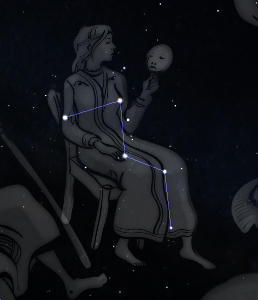
Cassiopeia Constellation
This constellation is part of the 48 constellations cataloged by the Greek astronomer Ptolemy in the second century after Christ. Ptolemy published the constellations known at that time in an astronomical treatise entitled Almagest.
The constellation Cassiopeia occupies an area on the celestial sphere of 598 square degrees and is, therefore, a relatively large constellation. Of the 88 modern constellations, only 24 are larger than Cassiopeia.
It is located precisely in the first quadrant of the northern hemisphere. Due to its position in the sky, it is only visible from latitudes above 20 degrees south.
Its adjoining constellations are the Giraffe (Camelopardalis), Cepheus (Cepheus), the Lizard (Lacerta), Andromeda (Andromeda), and Perseus (Perseus).
The constellation is known to contain two Messier objects and a significant number of open clusters.
Origin and mythology of the constellation Cassiopeia
Cassiopeia is a character from Greek mythology, wife of King Cepheus and queen of Ethiopia. According to Greek myth, Queen Cassiopeia boasted that her daughter Andromeda was more beautiful than the Nereids, the nymphs of the sea.
The nymphs wanted to punish this insolence and asked the god Poseidon for help. As revenge, Poseidon sent the monster Ceto to destroy the kingdom of Cepheus and Cassiopeia. Cepheus and Cassiopeia asked the oracle for help, and it indicated that the only way to save the kingdom was to sacrifice his daughter Andromeda to appease the monster Ceto.
Cepheus and Cassiopeia carried out the oracle’s orders, and Andromeda was tied to a rock and offered to Ceto. It was then that the hero Perseus appeared, who, after having killed Medusa, also defeated Ceto and freed Andromeda.
Although Ethiopia was saved from the destruction of the monster Ceto, Poseidon believed that Cassiopeia deserved punishment and, for this, he placed her in heaven linked to his throne. Also, Andromeda and Perseus were transferred to the sky as a constellation.
Cassiopeia stars
The stars of Cassiopeia are relatively bright. Four of them have an apparent magnitude less than 3, and four-plus an apparent magnitude between 3 and 4. In total, it contains 157 stars with an apparent magnitude less than 6.5 and that, therefore, can be seen with the naked eye.
The brightest stars in Cassiopeia are Alpha, Beta, Gamma, Delta, and Epsilon Cassiopeiae. These five stars are easily recognizable in the sky because they form the double vee (W) characteristic of this constellation.
Alpha Cassiopeiae
Alpha Cassiopeiae is the second brightest star in this constellation as it has an apparent magnitude of 2.24. Traditionally it has also received the name Schedar, which comes from the Arabic sadr and means chest, due to its position in the figure of Cassiopeia.
This star is an orange giant located approximately 228 light-years from the solar system.
Beta Cassiopeiae
Beta Cassiopeiae is the third brightest star in the constellation. Its official name is Caph, a word that comes from the Arabic kaf and means palm.
Beta Cassiopeiae is a white-yellow giant star, its apparent magnitude is slightly lower than Alpha Cassiopeiae, 2.28, and it is located 55 light-years from the solar system.
Gamma Cassiopeiae
Gamma Cassiopeiae is currently the brightest star in Cassiopea, with an apparent magnitude of 2.15. However, the brightness of this star experiences significant fluctuations between values of 1.6 and 3.
This star is also known by the name Navi and is 550 light-years from Earth.
Delta Cassiopeiae
Delta Cassiopeiae is a Cassiopea binary star known as Ksora or Ruchbah, an Arabic word meaning knee.
Its main component is a star in the phase of conversion to a giant star. The combined apparent magnitude of the two stars is 2.68. This star system is approximately 99.4 light-years from Earth.
Epsilon Cassiopeiae
Epsilon Cassiopeiae is the fifth brightest star in the constellation. Its apparent magnitude is 3.4, and its distance from the solar system is estimated to be 410 light-years. This star is also known by the name Seguin.
Eta Cassiopeiae
The star Eta Cassiopeiae has traditionally received the name Achird. This star is a binary star made up of a yellow dwarf and an orange dwarf. The two stars revolve around each other with an orbital period of approximately 480 years.
The apparent magnitude of this star system is 3.46, and it is located 19.4 light-years from the solar system. It is, therefore, a relatively close star system.
Zeta Cassiopeiae
Zeta Cassiopeiae is a star located 590 light-years from the solar system and with an apparent magnitude of 3.66. This star is a blue-white giant. Its official name today is Fulu, a Chinese word that means auxiliary road.
Other stars
There are other relatively bright stars in the constellation Cassiopeia, many of them with a variable brightness that fluctuates over the years. The existence of planets in 15 stars of this constellation has also been confirmed.
One of the most interesting cases is that of the star HR 8832. Around this star, seven planets have been detected, although two of them are pending confirmation. This star is located only 21.2 light-years from the solar system, and its apparent magnitude is 5.57. Two of these planets are rocky and are called super-earths because they have a mass significantly bigger than our planet’s. The rest of the planets appear to have a gaseous nature similar to that of Jupiter.
Planetary systems with more than one planet have also been detected around HD 7924, HD 13908, and HAT-P-44.
Deep space objects
The constellation Cassiopeia is interesting because it contains two Messier objects: M52 and M103. It is also interesting for the Heart nebula and the Soul nebula. Because part of the Milky Way passes through the constellation Cassiopeia, several open clusters can be seen between its limits.
Messier 52
The Messier 52 object, also known as NGC 7654, is an open cluster discovered by Charles Messier in 1774. This cluster is relatively bright, reaching an apparent magnitude of 5. Consequently, it can be seen with a simple telescope. It is estimated to be 4600 light-years away.
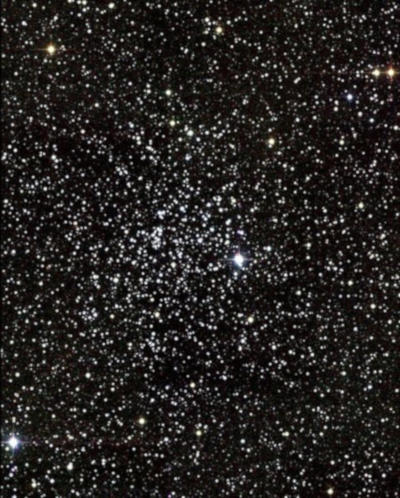
Messier 103
The Messier 103 object is also an open cluster known as NGC 581. This cluster was discovered by Pierre Méchain in 1781, has an apparent magnitude of 7.4, and is easy to see with binoculars or a simple telescope. It is estimated that it contains more than 100 stars and is located approximately 9500 light-years from the solar system.
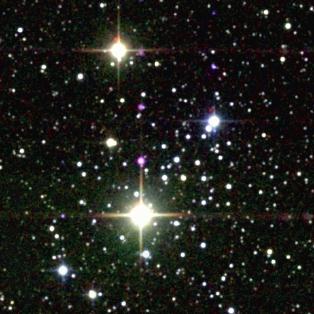
Heart Nebula
The Heart Nebula, cataloged as IC 2805, is a nebula discovered by William Herschel in 1787. This nebula is named for its shape and red color, which is the consequence of a series of stars in its center.
It is estimated that it occupies an area with a radius of 165 light-years and that it is located 7,500 light-years from the solar system.
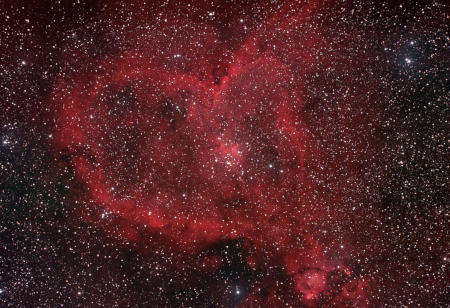
Soul Nebula
The Soul Nebula, also known as IC 1848 or Westerhout 5, is an emission nebula located on the eastern side of the Heart Nebula and 7,500 light-years from Earth.
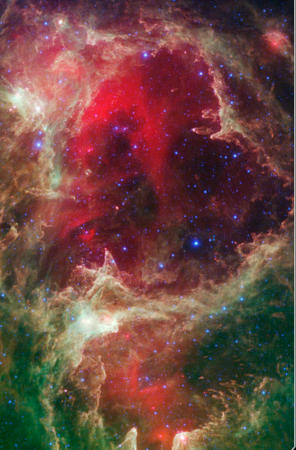
Galaxies NGC 147 and NGC 185
The galaxies NGC 147 and NGC 185 are two spheroidal dwarf galaxies in the constellation Cassiopeia.
NGC 147 is located at a distance of 2.53 million light-years from Earth and was discovered by John Herschel in 1829. The measurements carried out indicate that this is a satellite galaxy of the Andromeda galaxy. This galaxy is part of the Local Group, which is the same group of galaxies to which the Milky Way belongs.
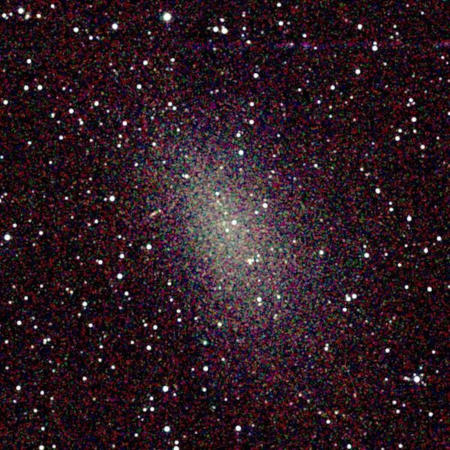
NGC 185 has very similar characteristics. In this case, the galaxy is 2.08 million light-years away. It is also considered part of the Local Group, and its movement indicates that it is a satellite galaxy of the Andromeda galaxy. William Herschel discovered this galaxy in 1787.
